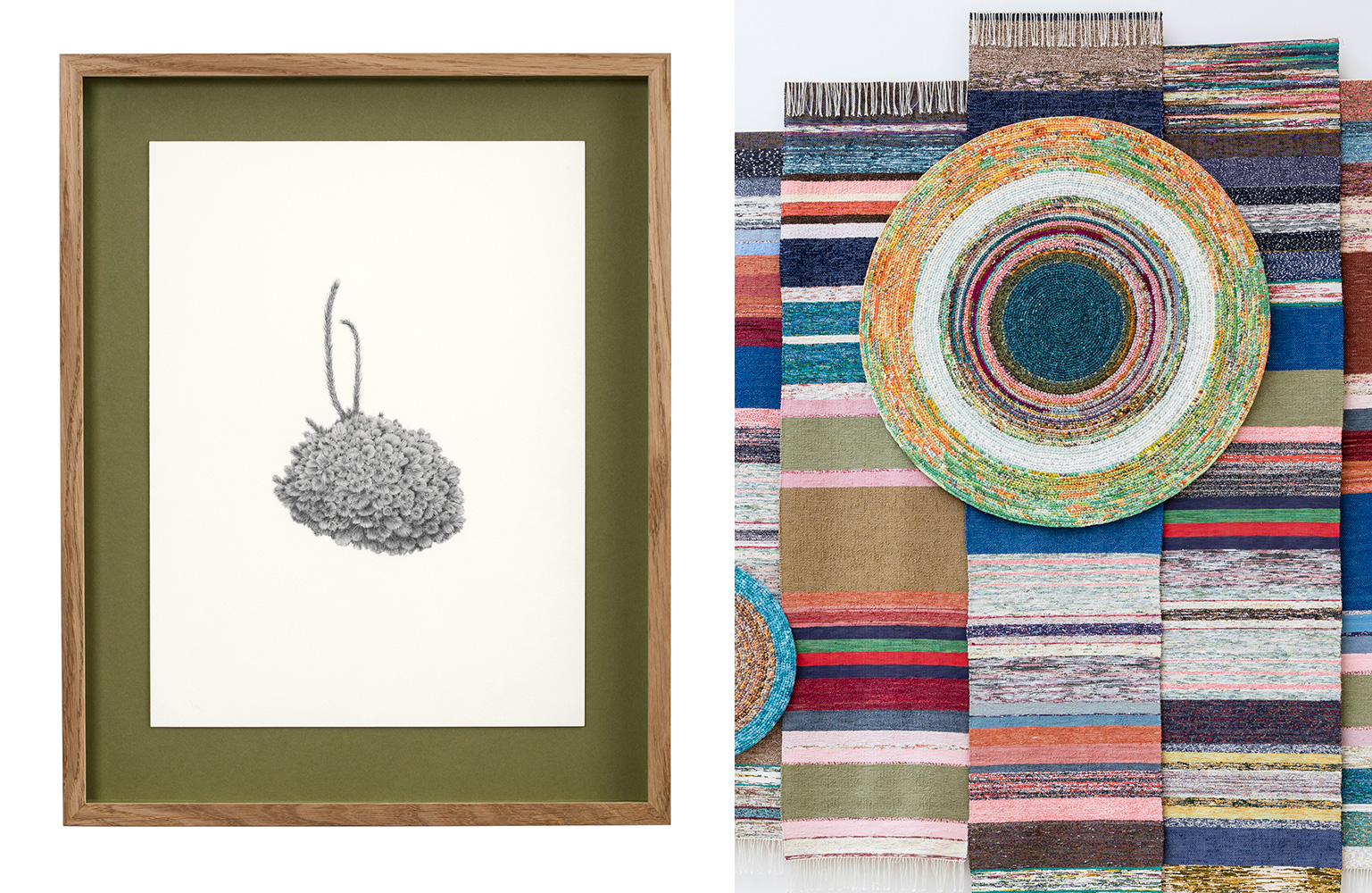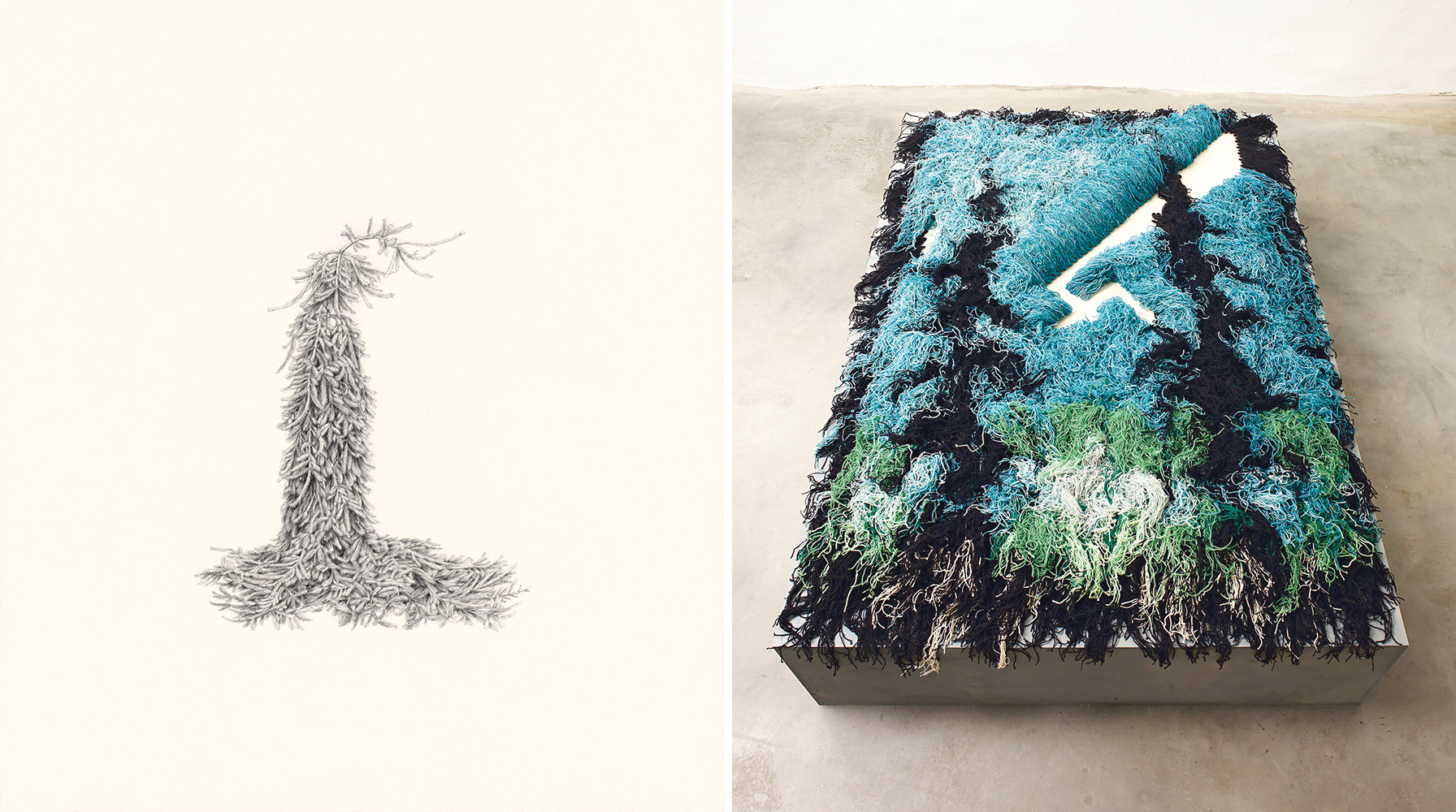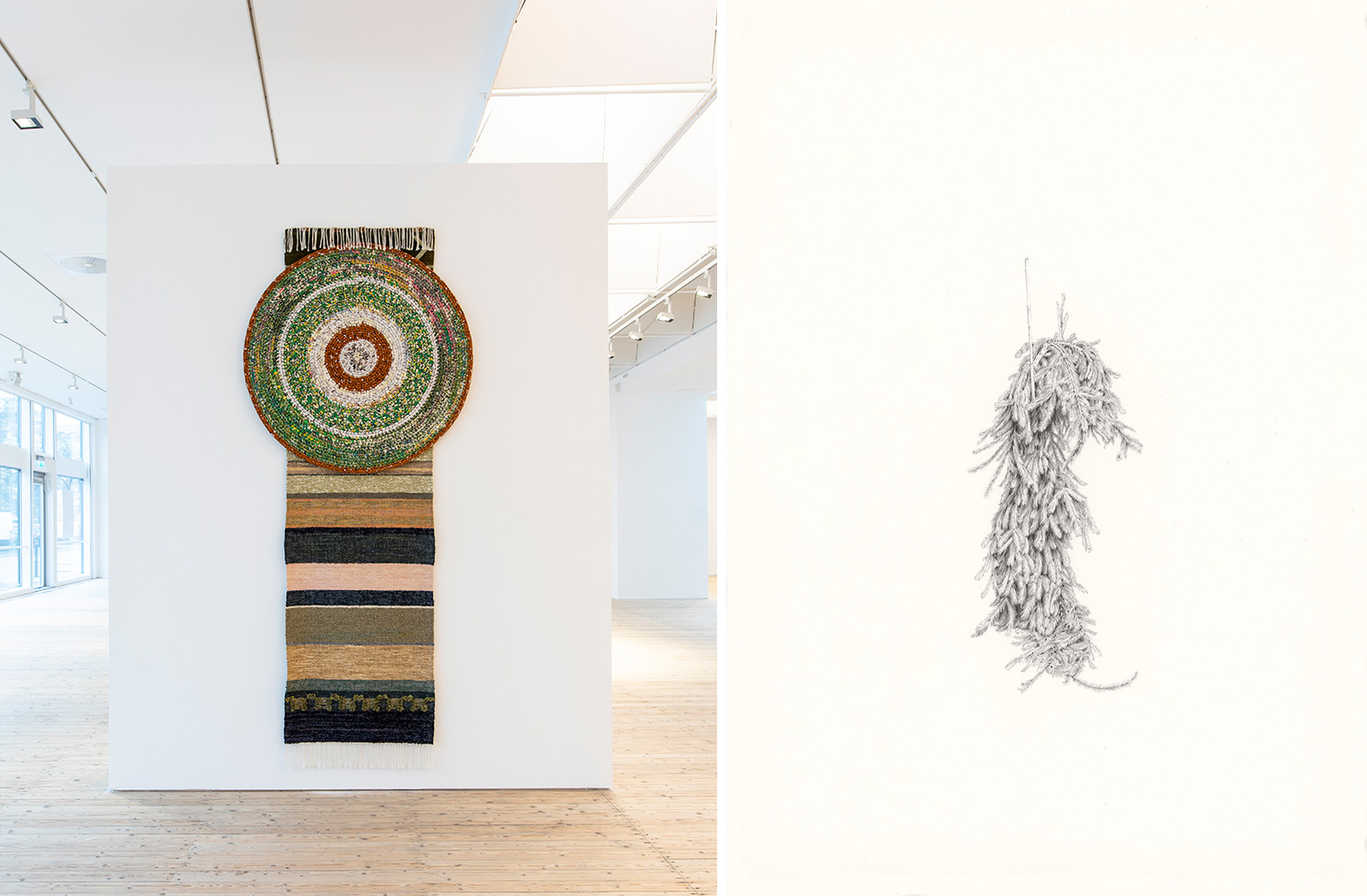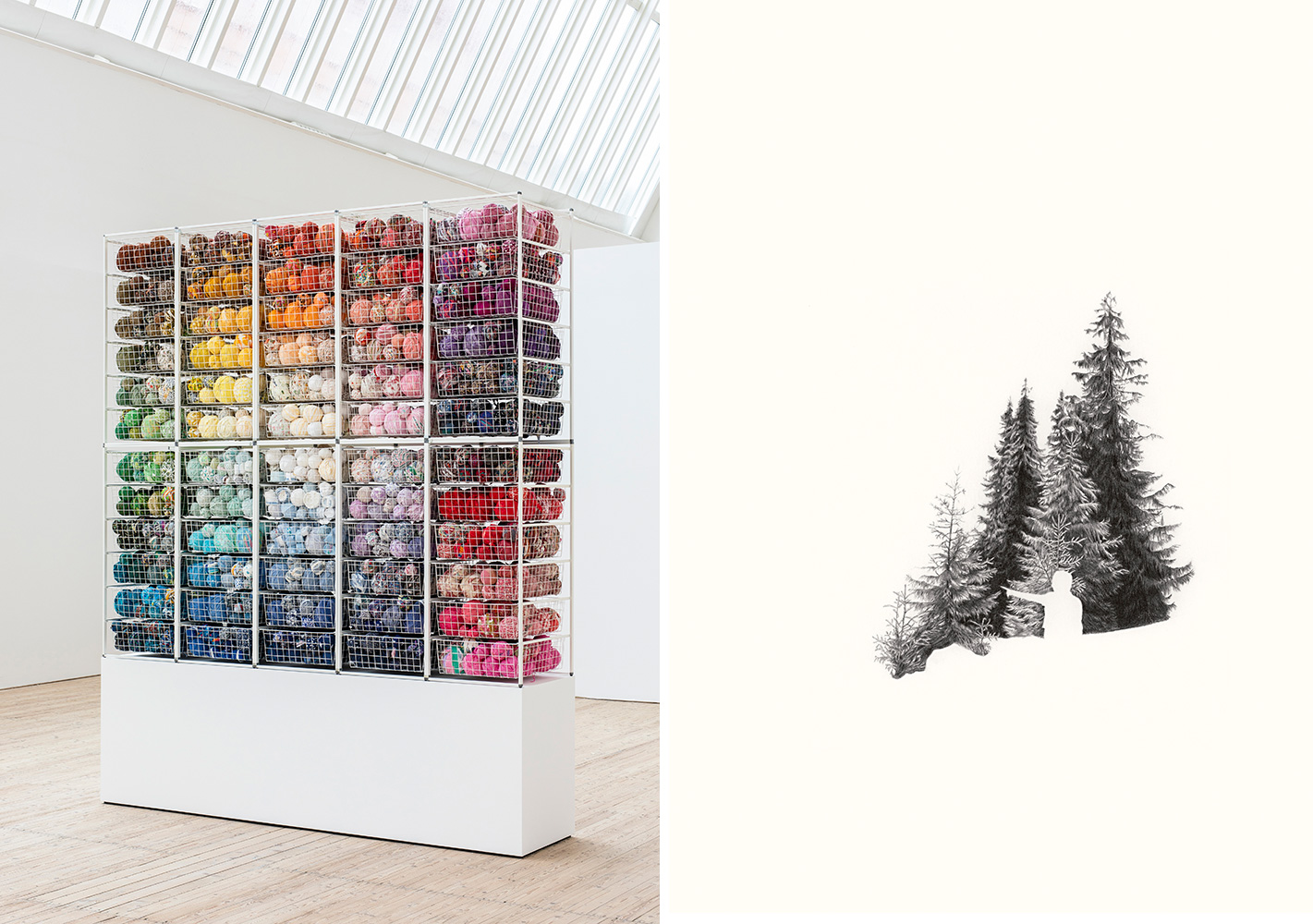PRESENTATION: Ann Böttcher-Works 2000-2021
 Ann Böttcher works in Malmö, and has mainly received recognition for her meticulously executed pencil drawings. Other techniques she works with include collage, weaving, and installations. For many years, Böttcher has taken an interest in how identities are formed–culturally, nationally, and historically. Her works often point to connections from the past to the present, between our common, shared history and our individual, personal ones.
Ann Böttcher works in Malmö, and has mainly received recognition for her meticulously executed pencil drawings. Other techniques she works with include collage, weaving, and installations. For many years, Böttcher has taken an interest in how identities are formed–culturally, nationally, and historically. Her works often point to connections from the past to the present, between our common, shared history and our individual, personal ones.
By Efi Michalarou
Photo: Malmö Konsthall Archive
Ann Böttcher presents her solo exhibition “Works 2000-2021” at Malmö Konsthall. Ann Böttcher’s early drawings started as a substitute for the experience of nature and offered a way to get into the same state of mind. The technique demands time-consuming, monotonous, repetitive work which served a meditative purpose. “I drew like I was scanning the image onto the paper; it was meditative and I got lost in the details,” Böttcher explains. Weaving came about in a similar way. “Around a decade ago, drawing didn’t fill this function anymore and weaving came in as a much-needed contrast. I needed the physicality that is embodied in this handicraft: the tearing of textiles, the beating of the loom, the long and heavy rugs.” Referencing Romanticism and key artists in Swedish history, as well as earlier influential figures, Böttcher is interested in how aesthetical and political projections characterise the notion of nature. The forest, in particular the spruce, is at the centre of Böttcher’s imagery. Using the same methodology as would an historian, she examines and surveys Nordic nature and historical forms of reflection, but within an artistic practice. How, for example, has the spruce served as a symbol for the formation of territorial claims or national identities? In “Den svenska serien (ett urval)” (2005), Böttcher has made a timeline of the spruce spanning more than 400 years. With the aid of photocopies, printouts, Post-it Notes and her own pencil drawings, she highlights how closely interwoven Swedish cultural history and identity is with the spruce. With the exquisite craftmanship Böttcher puts forward, the works risks being relegated to the aesthetically pleasing and to be about nature. One must be mindful to catch what lies underneath. As in, for instance, “St. Joseph’s 1827–2014”, a series of five drawings. The title refers to an Irish mental hospital situated right in between a cemetery and a prison. In this series, Böttcher has drawn Irish yew and cypress trees that grow in the hospital grounds. On a title page accompanying the work, there is a list of the hospital’s various name changes as dictated by psychiatric reforms, which gives insight into an institution’s societal and humanitarian perspectives through the ages. Had French philosopher Michel Foucault seen this work, he would certainly have had a great deal to say in relation to his own field studies on institutions and control. After all, the philosopher counted these spaces as ‘”heterotopias of deviation: those in which individuals whose behaviour is deviant in relation to the required mean or norm are placed”. The issue of the controlling institution is also present in the background of “Resan och hamnen (Återbrukerskan)” (2012). This is a large wall tapestry in a Scandinavian weaving style, consisting of nine woven rag rugs and five crocheted carpets mounted on top, like floating suns and planets. The tapestry is a public work of art that usually hangs at Vipan, an upper secondary school in Lund. The first part of the title comes from a memorial stone bearing the inscription: “If the journey was stormy, how restful is the harbour.” The stone is the only trace today of the building’s gruesome history. Between 1935–1982, this school was Vipeholm Hospital, an institution for the so-called “mentally deficient,” where the National Swedish Board of Health ran the largest human experiment in Sweden’s history. Commissioned by the government, a study on tooth decay was conducted on patients, by feeding them sugar as unknowing subjects in the experiment. In a new work, Böttcher turns to her own family story. Here she revisits a topic she has worked on many times before: namely the German past. Böttcher has a German background and highlights here the personal history of her father, who like millions of other Germans was forced to flee in post-war Europe. “Naturally, this new piece will be my latest, but it could just as well have been the very first work I did, when it comes to this body of work related to Germany” Böttcher says. “It is the most personal, and for me it has something sort of explanatory or introductory to it, while also being a sort of conclusion, as well as a sense of ending or closure”. Ann Böttcher has created a new artwork based on Goethe’s colour wheel. It consists of rags that were left over from the production of “The Journey and the Harbour (Återbrukerskan)”, and which have been stored in the artist’s studio ever since. Although Böttcher employs a variety of expressions and techniques, the works are all united by the fact that they address the same underlying issues. They become portraits of, or perhaps rather symbols of, the ways that identity, power, and ideology are generated and exercised in society.
Photo: Ann Böttcher, The journey and the harbor (Återbrukerskan) detail, 2012, Wall textile in 14 parts, weaving and crochet, rugs made from recycled textiles, 360 × 800 cm, Courtesy Lund Art Gallery / Gymnasieskolan Vipan, Lund. Installation picture Malmö Art Gallery 2021, Photo: Helene Toresdotter
Info: Curators: Theodor Ringborg and Mats Stjernstedt, Malmö Konsthall, S:t Johannesgatan 7, Malmö, Sweden, Duration: 4/12/2021-27/2/2022, Days & Hours: Mon-Tue & Thu-Sun 11:00-17:00, Wed 11:00-21:00, www.konsthall.malmo.se

Right: Ann Böttcher The journey and the harbor (Återbrukerskan) detail, 2012, Wall textile in 14 parts, weaving and crochet, rugs made from recycled textiles, 360 × 800 cm, Courtesy Lund Art Gallery / Gymnasieskolan Vipan, Lund. Installation picture Malmö Art Gallery 2021, Photo: Helene Toresdotter


Right: Ann Böttcher ,The Lonely Spruces (after Sten Dunér), 2014. Pencil on paper. Courtesy Lund Art Gallery Photo: Camilla Gewing-Stålhane

Right: Ann Böttcher Ryamatta, Sweden (Postcard, NSB: God Helg. 1930s), 2008, Flax, wool yarn, 223 x 139 cm, Courtesy Moderna Museet, Stockholm. Purchase in 2008 with funds from the Österlind Foundation, Photo: Anders Norrsells / Wanås Konst

Photo: Ann Böttcher, The relationship with Mother Green, 2008, Pencil on paper\, Courtesy artist & Galerie Nordenhake Stockholm / Berlin / Mexico City

Right: Ann Böttcher, Pointing through a German forest, 2002, Pencil on paper, 46 x 34 cm, Courtesy Collection Magazine III Museum of Contemporary Art, Stockholm

